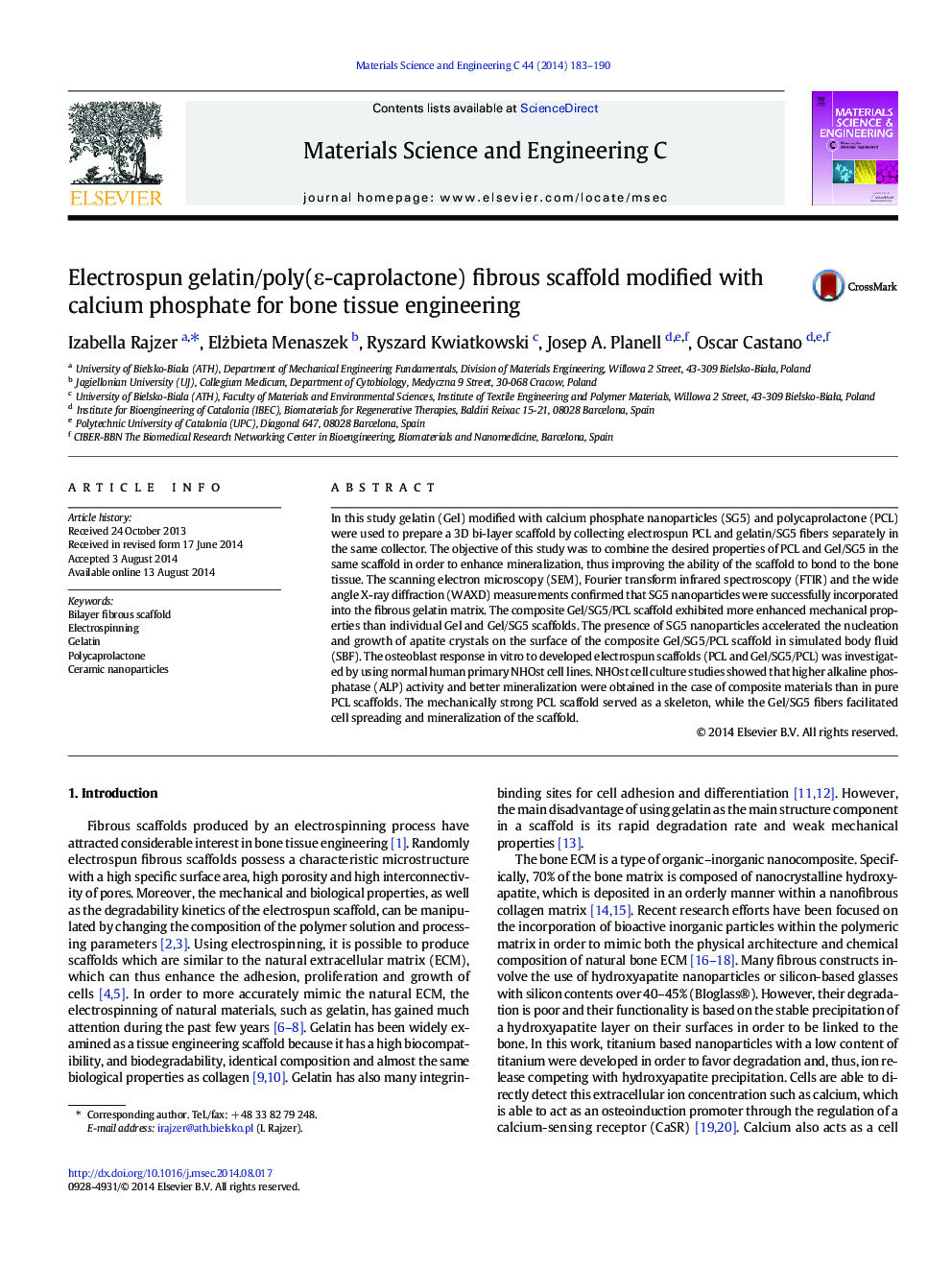| Article ID | Journal | Published Year | Pages | File Type |
|---|---|---|---|---|
| 1428274 | Materials Science and Engineering: C | 2014 | 8 Pages |
•Bi-layer scaffolds were produced by electrospinning method.•The addition of nanoparticles enhanced the bioactivity of scaffold.•Bi-layer scaffold enhanced ALP activity and NHOst cell mineralization.
In this study gelatin (Gel) modified with calcium phosphate nanoparticles (SG5) and polycaprolactone (PCL) were used to prepare a 3D bi-layer scaffold by collecting electrospun PCL and gelatin/SG5 fibers separately in the same collector. The objective of this study was to combine the desired properties of PCL and Gel/SG5 in the same scaffold in order to enhance mineralization, thus improving the ability of the scaffold to bond to the bone tissue. The scanning electron microscopy (SEM), Fourier transform infrared spectroscopy (FTIR) and the wide angle X-ray diffraction (WAXD) measurements confirmed that SG5 nanoparticles were successfully incorporated into the fibrous gelatin matrix. The composite Gel/SG5/PCL scaffold exhibited more enhanced mechanical properties than individual Gel and Gel/SG5 scaffolds. The presence of SG5 nanoparticles accelerated the nucleation and growth of apatite crystals on the surface of the composite Gel/SG5/PCL scaffold in simulated body fluid (SBF). The osteoblast response in vitro to developed electrospun scaffolds (PCL and Gel/SG5/PCL) was investigated by using normal human primary NHOst cell lines. NHOst cell culture studies showed that higher alkaline phosphatase (ALP) activity and better mineralization were obtained in the case of composite materials than in pure PCL scaffolds. The mechanically strong PCL scaffold served as a skeleton, while the Gel/SG5 fibers facilitated cell spreading and mineralization of the scaffold.
